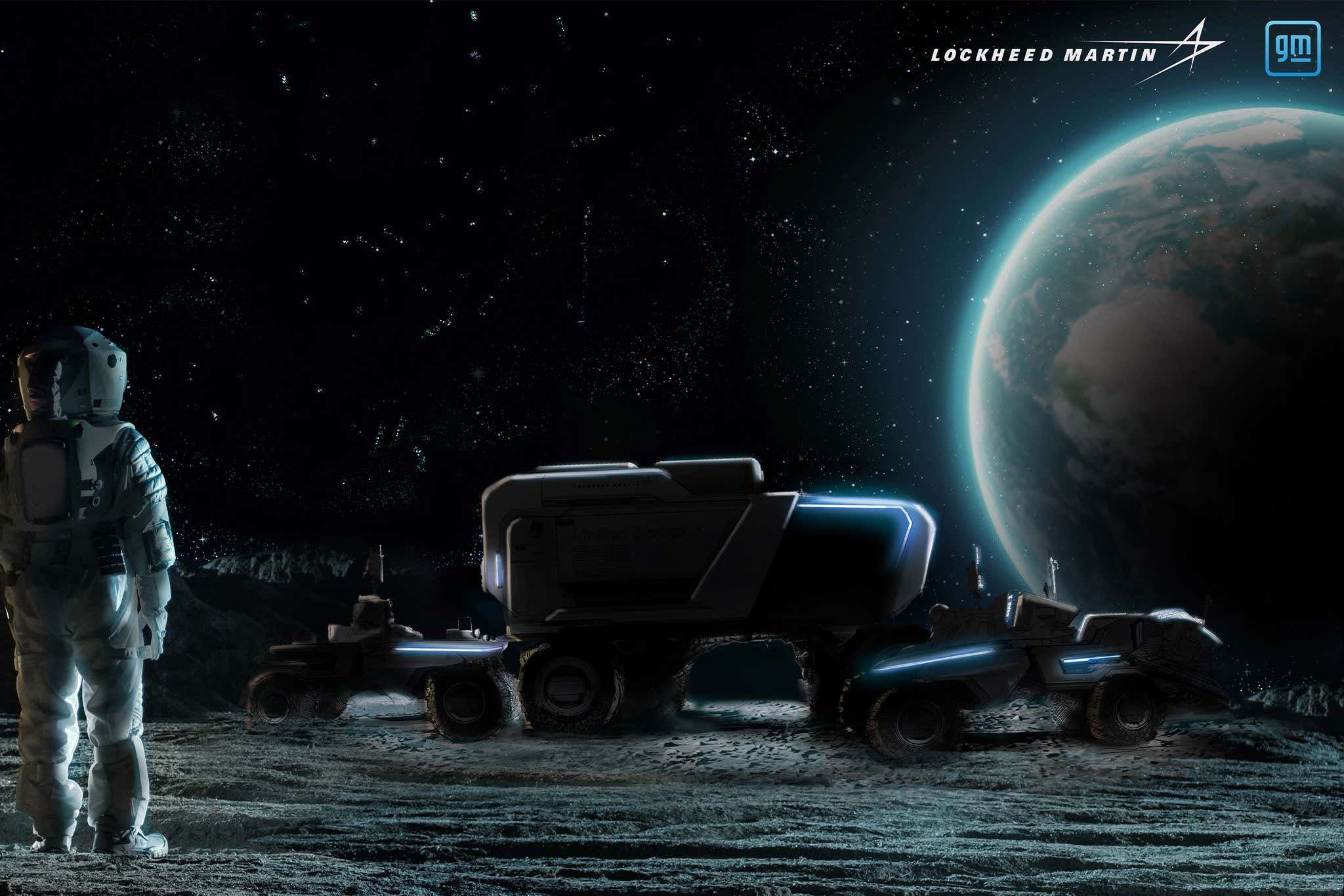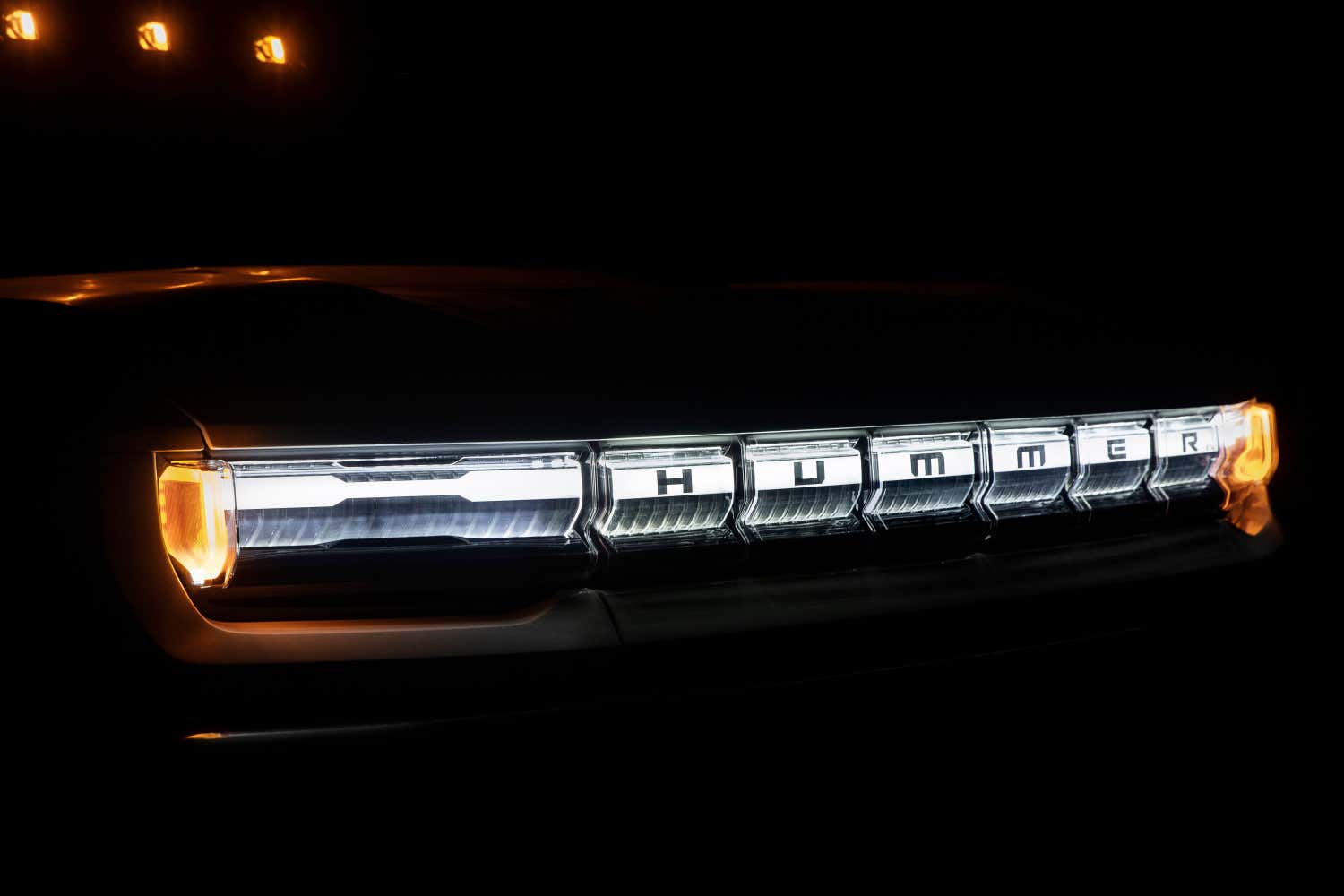Future you might soon be looking up at the moon with a General Motors product cruising along its surface. GM announced on Wednesday that it has partnered with the aerospace pros at Lockheed Martin to develop a next-generation lunar rover that NASA astronauts could one day use to explore Earth’s moon. Also, judging by the computer-generated buggy in the companies’ joint teaser, it might look a little bit like the Hummer EV from the front.
Together, the two companies plan to use their expertise to craft what they believe will be the ideal vehicle to put American boots—and tires—back on the moon for NASA’s upcoming mission in 2024.
As part of the Artemis program, NASA published a contract opportunity for a new Lunar Terrain Vehicle (LTV) in early 2020. The contract sought a new LTV equipped with cutting-edge technology that would “extend the exploration range” of fully suited astronauts across the moon’s surface. Not only would the vehicle need to be electrified, but it would also need to be capable of autonomous driving in hazardous and high-contrast terrains—basically, the ideal scenario for any automaker to prove their worth on the cutting edge of terrestrial driving here on earth.
“This alliance brings together powerhouse innovation from both companies to make a transformative class of vehicles,” said Executive Vice President of Lockheed Martin Space, Rick Ambrose. “Surface mobility is critical to enable and sustain long-term exploration of the lunar surface. These next-generation rovers will dramatically extend the range of astronauts as they perform high-priority science investigation on the Moon that will ultimately impact humanity’s understanding of our place in the solar system.”
The Hummer’s front fascia looks similar to the rover’s from the video.
This isn’t GM’s first foray into moon-worthy technology. In 1969, it worked closely as a subcontractor for Boeing to build the Lunar Roving Vehicle used in the Apollo missions. Keep in mind that was more than a half-century ago at a time where electric powertrains were fractionally efficient compared to the batteries and motors being put into EVs today.
The original Boeing/GM LRV used four 0.25 horsepower hub-mounted motors that were powered by a pair of 36-volt zinc-silver batteries. This provided a range of up to 57 miles, though it rarely traveled more than four miles from the landing site. It was built to travel across the moon’s surface at 8 miles per hour, though it was once clocked at a blazing 11.2 mph, and could carry a maximum payload of 1,600 pounds. Today, automakers have learned to produce more energy-dense batteries with significantly more efficient electric motors. While GM hasn’t released specs of its offering just yet, it’s clear that the next-generation LTV will be a step up from its ancestor.
Participating in the development of the new LTV is certainly a way for General Motors to flex its muscles amidst a slurry of new competition in the electric car segment. Many of its competitors are hot on one another’s tails while attempting to built the next big thing in EVs—that includes its neighbor, Ford, and the Blue Oval’s upcoming F-150 Lightning. Meanwhile, hints of GM’s entry back into the space race were carefully snuck into GM’s upcoming Hummer EV. For example, its kick panel has a stylish moon boot print, and the truck’s speaker grilles have a topographic map of the moon with an outline to mark the location of Neil Armstrong’s walk at The Sea of Tranquility. Also, it has a few moon-themed interior color schemes, aptly named Lunar Horizon and Lunar Shadow.
And let’s not forget about all of the tech that eventually leaked down from rockets to road-going cars. Pay close attention, because something you see going up to the moon could one day be in the next GM vehicle you own.
Got a tip or question for the author? Contact them directly: [email protected]
RELATED
NASA's Perseverance Rover Lands Safely on Mars
A decade's worth of collective work came down to this very (tense) moment.READ NOW
RELATED
From NASA To Amtrak, These Are All The Government Agencies With Tactical Teams
A recent review of federal law enforcement tactical teams explores various units spread across 18 different government agencies.READ NOW
RELATED
NASA Is Hiring Private Contractors To Retrieve Moon Dust
The Moon could quickly become a site of intense competition as space-faring nations explore new possibilities in lunar mining and militarization.READ NOW
RELATED
Four NASA Technologies That Trickled Down From Rockets to Cars
You have NASA to thank for both creature comforts and critical safety gear.READ NOW
RELATED
Stealthy 'Son Of Ares' Mystery Jet Appears With Odd Markings And NASA F-15 Escort
The intriguing test flights have continued with new aircraft types joining a trio of Scaled Composites' aircraft high over the Mojave Desert.READ NOW
Source: Read Full Article


